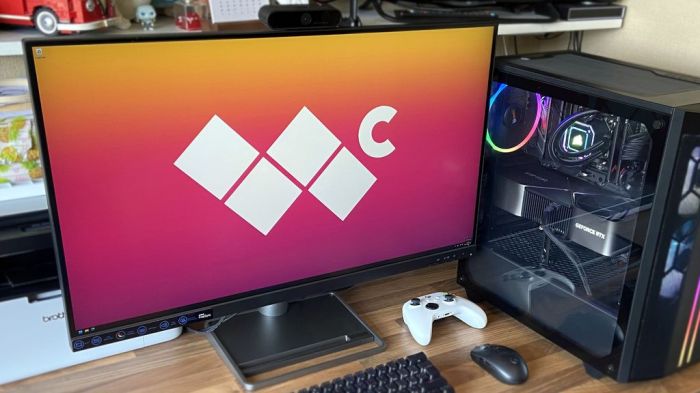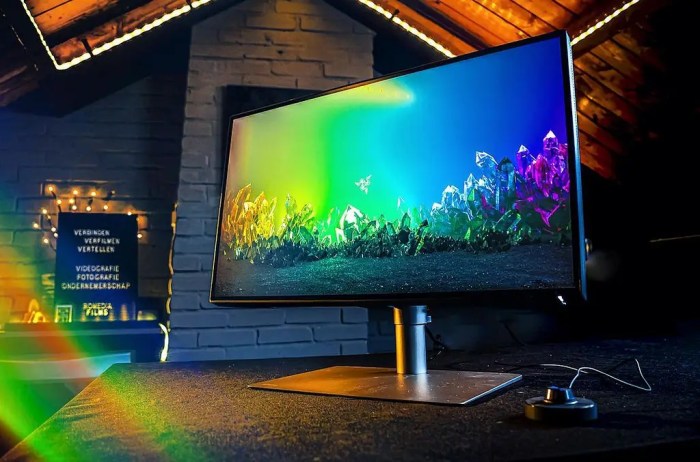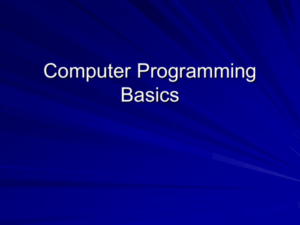
Welcome to the marvelous realm of pixels and refresh rates, where the best monitors for PC reign supreme! If you’re on a quest to find the perfect screen to elevate your gaming, photo editing, or Netflix binging experience, you’ve landed in the right spot. Monitors today come packed with more features than a Swiss army knife, making them essential tools in every digital warrior’s arsenal.
From dazzling resolutions that make you feel like you’re gazing through a crystal ball to refresh rates that could make even the fastest race cars blush, the right monitor can transform your PC setup from drab to fab. So, buckle up as we embark on this pixelated adventure to discover the best monitors that fit your unique needs!
Best Features of Monitors for PC

When it comes to selecting the best monitor for your PC, it’s like choosing the perfect pizza topping—everyone has their preference, but there are a few key ingredients that can make or break your experience. In the world of monitors, features such as resolution, refresh rate, and panel type play a crucial role in determining how well your screen serves your needs.
Whether you’re gaming, working, or binge-watching, knowing what to look for ensures you get the most bang for your buck!The features of a monitor not only enhance visual quality but can also significantly affect your productivity and enjoyment. Resolution is the clarity of the image; refresh rate dictates how smooth the visuals appear, while panel type influences color accuracy and viewing angles.
Let’s dive deeper into these elements and explore how they stack up against each other in the mighty realm of display technology.
Importance of Resolution, Refresh Rate, and Panel Type
Resolution is often the first thing that catches your eye when you’re looking for a monitor. It refers to the number of pixels that make up the display and is usually measured in width x height (for example, 1920 x 1080). Higher resolutions provide more detail, which is perfect for creative tasks and immersive gaming. Consider the following resolutions when making your choice:
- 1080p (Full HD): Good for general use and gaming, offering decent clarity.
- 1440p (Quad HD): A step up from 1080p, this resolution provides sharper images for gaming and design work.
- 4K (Ultra HD): Ideal for professionals and gamers who want the best possible visuals, but requires powerful hardware.
Refresh rate refers to how many times per second your monitor updates the image on screen, measured in Hertz (Hz). A higher refresh rate creates a smoother visual experience, which is especially important in fast-paced games or action movies. Here’s how refresh rates generally stack up:
- 60Hz: Standard for everyday use; good enough for most tasks.
- 144Hz: Excellent for gamers, providing smoother motion and reducing blurring.
- 240Hz and above: The holy grail for competitive gamers, allowing lightning-fast response times.
The panel type is where the real drama unfolds, as each has its strengths and weaknesses. Here’s a quick breakdown of the three major types:
| Panel Type | Pros | Cons |
|---|---|---|
| IPS (In-Plane Switching) | Outstanding color accuracy and wide viewing angles. | Generally more expensive and slower response times. |
| TN (Twisted Nematic) | Fast response times and affordable. | Poor color reproduction and narrow viewing angles. |
| VA (Vertical Alignment) | Excellent contrast ratios and good color depth. | Slower response times, which may impact gaming performance. |
Each type offers something unique, so your choice will depend on whether you prioritize color accuracy, speed, or contrast. Remember, just like picking the right toppings for your pizza, the right features will enhance your monitor experience and serve you well for years to come.
Monitor Recommendations for Different Use Cases
When it comes to selecting the perfect monitor, it’s not a one-size-fits-all scenario. Whether you’re a hardcore gamer, a photo editing wizard, or just someone who likes to browse the internet without straining your eyes, there’s a monitor out there just waiting for you to take it home. Let’s dive into the top picks that cater specifically to these different use cases, each with their own dazzling specs and features.
Top Monitors for Gaming
Gaming demands more than just a pretty picture; it requires speed, clarity, and responsiveness. A good gaming monitor can be the difference between a glorious victory and a sad defeat. Here are our top picks that will make your gaming experience a joyride:
- Asus ROG Swift PG259QN
-Featuring a mind-blowing 360Hz refresh rate and 1ms response time, this monitor is like strapping a turbocharger to your gaming rig. Users rave about its ultra-smooth performance in fast-paced games like Call of Duty. - Acer Predator X27
-With 4K resolution and HDR support, this beauty not only delivers stunning visuals but has a 144Hz refresh rate to boot. Gamers say it makes every pixel pop, making it perfect for both competitive and casual play. - Samsung Odyssey G7
-This monitor offers a 240Hz refresh rate and a 1ms response time, all wrapped in a gorgeous curved design. Users have commented on how immersive their gaming sessions are, “It’s like being in the game!”
Top Monitors for Photo Editing
For those who see the world through a lens, having a monitor that can accurately display colors is essential. Here’s a selection of monitors that will make your photos look as vibrant as they do in real life:
- BenQ SW271
-Boasting 99% Adobe RGB coverage and a 4K resolution, this monitor is every photographer’s dream. Users appreciate its color accuracy, stating, “I can trust it completely when editing my photos.” - LG UltraFine 27MD5KL-B
-This monitor provides stunning Retina 5K resolution, ensuring every detail shines through. Photographers love the P3 wide color gamut, making it perfect for high-quality photo editing. - Eizo ColorEdge CG319X
-With built-in calibration tools and 99% Adobe RGB coverage, this monitor is like having a color lab at your fingertips. Users often mention, “It takes the guesswork out of editing,” which is music to any editor’s ears.
Top Monitors for General Use
Not all of us are gamers or photographers, and that’s perfectly fine! For everyday tasks, you need a monitor that balances performance, comfort, and affordability. Here are the champions of general use:
- Dell UltraSharp U2720Q
-With a 27-inch 4K display, this monitor offers stunning visuals for everything from work to entertainment. Users have praised its ergonomics, saying, “I can adjust it just the way I like!” - HP Pavilion 27xw
-This beauty combines a sleek design with Full HD resolution, making it perfect for streaming and browsing. Users love its vibrant colors and say, “It makes my Netflix binge a pleasure!” - Samsung S80A Series
-This monitor provides 4K clarity with excellent connectivity options, perfect for multitasking. Users appreciate its eye-care features, remarking, “My eyes thank me after long work hours!”
Choosing the right monitor is like choosing the right pair of shoes; the perfect fit makes all the difference in the world!
Essential Considerations When Purchasing a Monitor
When it comes to purchasing a monitor, you might feel like a kid in a candy store. So many choices, yet so much confusion! Fear not, for we will navigate the pixelated maze together, ensuring you pick a display that won’t send your wallet into a downward spiral. Let’s dive into the essential factors that will guide your monitor purchase, such as budget, size, ergonomics, and connectivity options.
Budget and Size Considerations
Setting your budget is like drawing a line in the sand—but make sure you don’t end up with a sandcastle of regrets! Monitors can range from affordable to “Did I just buy a spaceship?” prices. It’s crucial to find that sweet spot between what you can spend and what you need. While you can find decent monitors for under $200, investing a bit more can greatly enhance your experience with features like higher refresh rates and better color accuracy.
Choosing the right size monitor can be a bit trickier than picking the right size nachos at a sporting event. Here’s a nifty guide to measuring your space and selecting the perfect screen size:
Determine Monitor Placement
Measure the distance from your eyes to where the monitor will be. Ideally, this should be between 20 to 40 inches for most users.
Choose the Screen Size
As a general rule, larger monitors (27 inches and above) work well for immersive experiences, while smaller sizes (24 inches) are good for compact spaces.
Consider Multiple Monitors
If you’re a multitasking wizard, consider a dual-monitor setup. Just be ready to invest in some serious desk space—or a new desk altogether!
Ergonomics and Connectivity Options
Good ergonomics might not make your monitor sing, but they definitely keep your back from screaming! Look for monitors with adjustable stands that allow you to tilt, swivel, and raise your screen to eye level. After all, no one wants to end up looking like the Hunchback of Notre Dame after a long day of gaming or work. A monitor with a blue light filter is also a great investment for those who find themselves staring at the screen for hours on end.
Connectivity is another crucial piece of the puzzle. Your monitor should play nice with your computer, like peanut butter and jelly. Here’s a quick rundown on important connectivity options:
HDMI
Standard for modern devices; perfect for high-definition video and audio.
DisplayPort
Great for video gaming and high refresh rates, especially if you’re into the latest graphics technology.
USB-C
Increasingly popular, especially for laptops; offers video, audio, and power through one cable.
VGA/DVI
Old-school connectors should be avoided unless you’re connecting to an equally ancient system.
By considering these factors—budget, size, ergonomics, and connectivity—you’ll be well on your way to finding a monitor that meets both your needs and your budget. Remember, a good monitor is an investment in your productivity and entertainment. So, choose wisely, and may your pixels be ever vibrant!
Concluding Remarks

In conclusion, whether you’re gaming like a pro, editing photos with the precision of a hawk, or just trying to watch cat videos without straining your eyes, the right monitor can make all the difference. With the right features and specifications tailored to your needs, you’ll be well on your way to achieving visual nirvana. Now that you’re armed with knowledge, go forth and choose your display wisely – your eyes (and your productivity) will thank you!
Quick FAQs
What should I look for in a monitor?
Look for resolution, refresh rate, panel type, and connectivity options that suit your needs!
How do I know what size monitor to buy?
Measure your desk space and consider your viewing distance; generally, 24-32 inches is a sweet spot for most!
Are gaming monitors worth the investment?
If you’re serious about gaming, yes! The higher refresh rates and response times can give you a competitive edge.
What is the difference between IPS and TN panels?
IPS panels offer better color accuracy and viewing angles, while TN panels are quicker but have poorer color reproduction.
Can I use a TV as a monitor?
Yes, but check for input lag and resolution; not all TVs are created equal for PC use!






